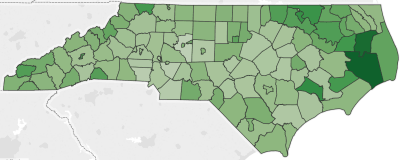In the fall of 2012, I met a scientist from Duke University named Brian Hare. Professor Hare studies bonobos in the Congo. His advice?
Don’t wait for college to become a scientist. If you want to be a scientist, start now.
I was really young when I first saw orcas hunting baby sea lions on a beach in Argentina. The video of this amazing animal behavior was featured on a PBS television show called Kratt’s Creatures.
I was captivated.
Leap forward to spring break 2013, and my step-dad agreed to take me to Argentina to begin studying this animal behavior up close and in person. These are the only orcas in the world known to use this behavior to hunt. It happens in March and April each year on a stretch of beach on the remote Peninsula Valdez. The beach is owned by a farmer named Juan, and he rents out his six bedrooms to photographers and researchers wanting to learn more about the orcas. We don’t know Juan. I found him on the Internet and invited myself down to visit.
Juan’s family has owned this property for more than 100 years, and his grandfather says the behavior was occurring as early as 1906. An orca named Mel was the one to make this behavior famous and known to the world. Mel was a large male estimated to be 52 years old when he was last seen four years ago. He only did a swim by then.
Now a younger male named Joluel (sounds like Holowell) has taken Mel’s place. Joluel travels with a female orca named Sol. We saw nine strikes total on our trip, six were successful. Three of the strikes were by Joluel. Sol used to strike but because of her age she does not take the risk anymore. Joluel shares the baby seals, called puppies, he captures with Sol.
Conditions have to be perfect for a strike. No wind, no waves, and puppies in the water. The orcas use echolocation to hear the pups. The pups are too young to know what an orca is or to be scared. The orcas patrol the shoreline about 15 feet out, charging straight into the shore to capture the pup.
The rest of the strikes that we saw came from a family group of four orcas – Maga the mother, her elder daughter, an elder son, and her baby daughter. Maga and her older children all hunt, sometimes Maga and one of the children strike at the same time. Another behavior we observed and photographed was Maga teaching her baby how to hunt. We knew she was doing this because no pups were in the water at the time.
There are 20 orcas in the area but only eight are known to hunt baby sea lions.
Nobody likes death. It is hard to watch. But it is part of the cycle of life.
These orcas have developed a new behavior that cuts against everything they know. They are genetically programmed not to beach, not to approach the shore. But their amazing intellect has allowed them to overcome their fear. I think this is the most amazing animal behavior in the natural world.
A couple of years ago in the journal Science, they asked whether a dolphin should be considered a person. In addition to the size of the brain, the role of the neocortex (the part of the brain that controls problem solving and self-awareness), and the presence of Von Economo neurons (linked to emotions), the scientist noted that dolphins are able to recognize themselves, understand complex human sentences, and they are aware of their environment, have personalities, exhibit self-control, and treat others well.
Standing 15 feet from an orca, its human qualities are inescapable. They live in family groups. They teach their young. They exhibit self-control, making good choices about strikes so the energy they spend on hunting is worth the calories.
I told Juan I could die happy now, but he said not yet, “there is so much more to see.”
We just returned from our second trip to Estancia la Ernestina, the farm and beach these orcas visit each spring. This time, on our watch, no orcas. I realized how frustrating it must be for researchers to plan expeditions and then leave it up to nature to cooperate. Three days after we left, four orcas had 11 strikes in one day.
You don’t have to go to Argentina to be a citizen scientist. These opportunities have always been available in our backyard. Now the Internet is opening up our world, and we can explore virtually as well.
What do you want to study? As Professor Hare told me, don’t wait for college. Study it now.
Some of my favorite resources:
For ornithology, http://www.birds.cornell.edu/page.aspx?pid=1664
For all kinds of critters, http://www.projectnoah.org/
For all kinds of science, Glenn Murphy, Science Explorers! Making Discoveries in Our World, NC Science Festival, 2012.
Citizen scientists at Exploris Middle School:
Students at Exploris, a charter school in Raleigh, wrote an article about Eastern Box Turtles, recently published in the January/February 2015 issue of WILDLIFE by the NC Wildlife Resources Commission. They included interviews, pictures, and all the data collected by 6th graders, creating maps using ArcGIS to draw interesting conclusions, according to the school’s website.

What resources do you know about for citizen scientists?
A video of a double strike by the orcas in Argentina:
















